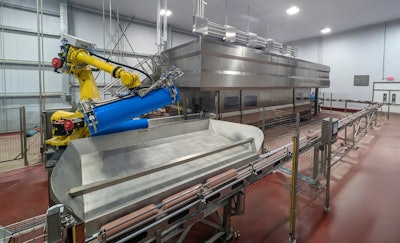
Hiperbaric has installed its 400th high-pressure processing (HPP) system worldwide at Instinct Raw Pet Food’s new Nebraska, U.S. facility. The company noted this milestone highlights the growing use of HPP technology in pet food manufacturing, which is designed to enhance food safety while preserving the nutritional integrity of raw diets.
HPP is a natural, cold pasteurization technique that uses extreme water pressure (up to 87,000 psi) to eliminate harmful pathogens while preserving the nutritional integrity of raw ingredients.
"This 400th installation represents not just a milestone for Hiperbaric, but a testament to the growing adoption of HPP technology across the global food industry," said Rob Peregrina, U.S. executive director. "Our partnership with Instinct exemplifies how innovative companies are leveraging HPP technology to deliver superior products while prioritizing safety and quality."
The Hiperbaric 525i system is designed can process approximately 8,030 pounds per hour with a high speed of 10.7 cycles per hour. The technology uses extreme water pressure to eliminate pathogens without artificial preservatives, ensuring raw pet food safety without compromising nutrients. The installation at Instinct's 150,000-square-foot Nebraska facility integrates seamlessly with their production lines, featuring a turn-key HPP automation solution with loading and unloading robots and material handling. This integration enables Instinct to streamline their manufacturing process, increasing productivity and traceability, while reducing injuries from repetitive movements.
Instinct has used HPP since 2010 and selected Hiperbaric’s system for its automation, safety features, and post-sales support. "We were one of the first pet food companies to embrace HPP technology, understanding its crucial role in ensuring food safety while maintaining the nutritional integrity of raw ingredients," said Wes Oertli, director of capital project management at Instinct.
The installation includes a turnkey HPP automation system with robotic loading and unloading, improving production efficiency and traceability while reducing workplace injuries.
Adapted from a press release.














